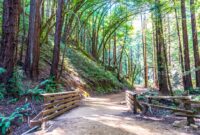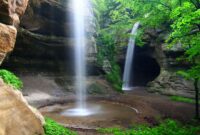Find a hike near me—a simple search query with countless possibilities. This phrase embodies the desire for outdoor exploration, a yearning for fresh air and scenic beauty. Whether you’re an experienced hiker seeking challenging trails or a family looking for a gentle nature walk, the quest for the perfect nearby hike is a universal one. This exploration delves into the nuances of this search, examining user motivations, data sources, and the optimal presentation of hike information to ensure a seamless and enjoyable user experience.
We’ll cover the diverse range of user needs, from seasoned adventurers to families with young children, each with unique preferences regarding trail difficulty, length, and proximity. We’ll also investigate reliable data sources for hike recommendations, exploring the strengths and limitations of various platforms. Finally, we’ll examine how to effectively filter and present hike information, ensuring users find the perfect outdoor adventure tailored to their specific requirements.
Understanding User Intent Behind “Find a Hike Near Me”
The search query “Find a hike near me” reveals a user’s desire for outdoor recreation, but the specifics of that desire vary widely. Understanding these nuances is crucial for providing relevant and useful results. Factors like experience level, the purpose of the hike, and the user’s definition of “near” all contribute to the overall intent.
The diverse motivations behind this simple search highlight the need for a sophisticated search algorithm that can account for these individual differences. This involves not only geographical proximity but also considerations of trail difficulty, length, and surrounding amenities.
User Motivations and Profiles
The following table categorizes different user types based on their motivations and location preferences when searching for a nearby hike.
| User Type | Primary Motivation | Secondary Motivation | Location Specificity |
|---|---|---|---|
| Experienced Hiker | Challenging terrain and scenic views; potentially seeking less-traveled trails. | Lengthy hike; opportunities for solitude; specific geological features (e.g., waterfalls, mountain peaks). | May be willing to travel further; might specify a particular park or region. |
| Beginner Hiker | Easy, well-maintained trails with minimal elevation gain; a safe and enjoyable experience. | Short to moderate hike length; scenic views; proximity to amenities (parking, restrooms). | Likely looking for hikes within a very close radius; might prioritize proximity to home or other familiar locations. |
| Family with Young Children | Short, easy trails suitable for young children; minimal elevation change; safe and accessible environment. | Scenic views; opportunities for wildlife spotting; potential for picnic areas or playgrounds nearby. | Very close proximity; likely searching within a small radius of their home or a specific family-friendly location (e.g., a park with a playground). |
| Casual Nature Lover | Relaxing walk in nature; a gentle escape from urban life; fresh air and exercise. | Scenic views; accessible trail; proximity to other attractions (e.g., cafes, shops). | Typically searching within a relatively close radius; might prioritize accessibility by public transportation. |
Location’s Influence on Search Intent
Location is paramount in interpreting “Find a hike near me.” A user in a rural area might be willing to travel several miles for a suitable hike, while a city dweller might expect results within a much smaller radius. The density of trails in the surrounding area also impacts the search; a densely populated area with numerous parks will yield different results than a sparsely populated region. For example, a search conducted in the heart of Yosemite National Park will likely return different results compared to a search in a suburban neighborhood. The search algorithm must consider the typical trail density of the location to provide relevant results.
Ending Remarks
Finding the ideal hike near you should be a straightforward and enjoyable process. By understanding user intent, leveraging reliable data sources, and implementing effective filtering and presentation methods, we can create a user-friendly experience that connects people with the natural beauty surrounding them. This exploration has highlighted the importance of considering diverse user needs and providing accurate, accessible, and engaging information to facilitate outdoor exploration and encourage a deeper connection with nature. Ultimately, the goal is to empower users to effortlessly discover and enjoy nearby hiking trails, fostering a love for the outdoors and promoting healthy, active lifestyles.




